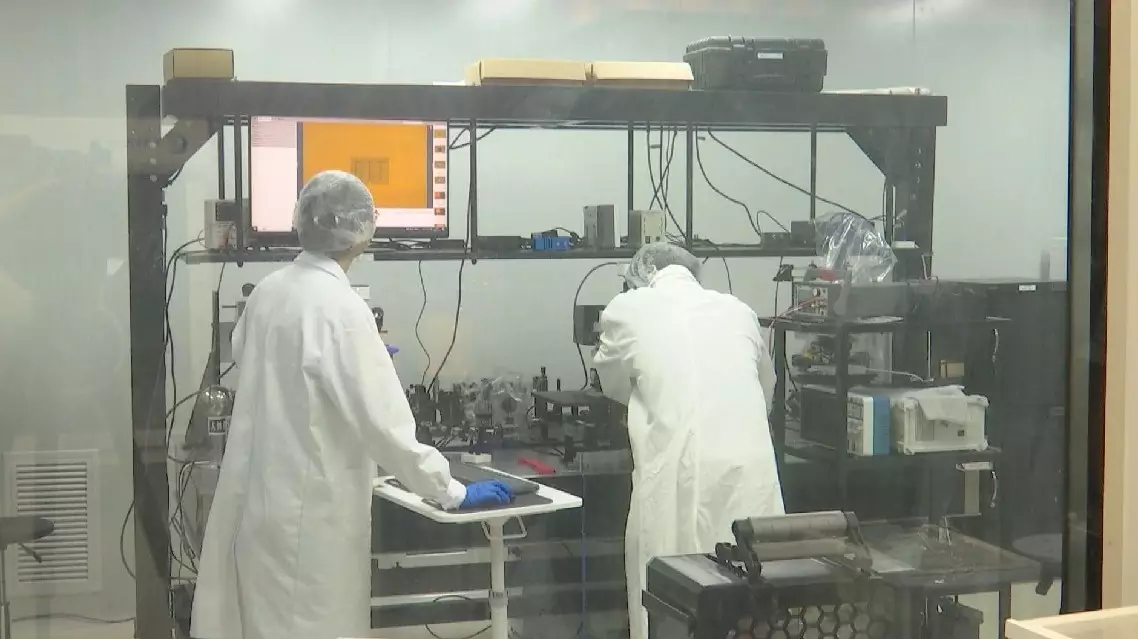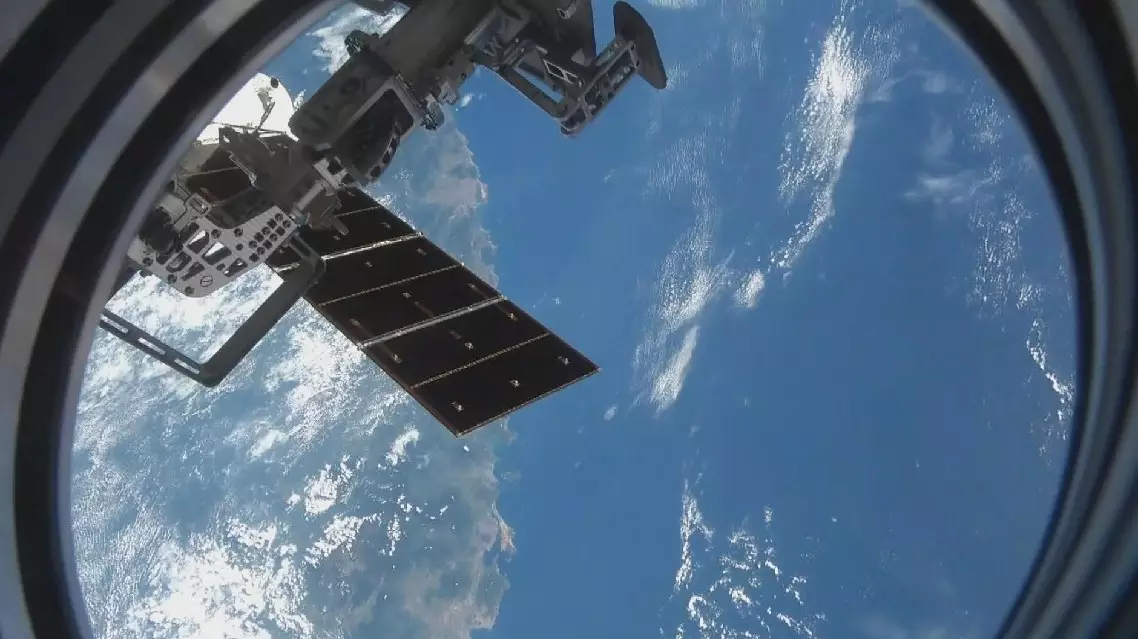Chinese scientists from the Beijing Institute of Technology have achieved precise navigation of nano-kirigami microrotors for the first time by using innovative technologies such as optoelectronic tweezers with multimode control, providing new solutions for future advanced optoelectronic micro/nanomachines.
Micro/nano manufacturing refers to industrial manufacturing technologies that operate at the microscale and nanoscale. For instance, the production of microchips involves complex and precise manufacturing processes at the nanoscale.
At the university's laboratory, Professor Li Jiafang from the School of Physics demonstrated the manufacturing, extraction, transfer, and manipulation of nano-kirigami microrotors. Under a microscope, a rotor with a diameter of only 10 micrometers was erected from a flat state and rolled in different directions under the control of optoelectronic tweezers.
"We know that the optical tweezers won the 2018 Nobel Prize in Physics. It has the capability to control translation in a back-and-forth manner and the rotational transmission of the structure. But it did not realize the control of a motion state, which is rolling. In this work, we have successfully utilized optical techniques to achieve control over the rolling movement of the structure," he explained.
Li also introduced that the size of a nano-kirigami microrotor is approximately one-tenth the diameter of a human hair. Such tiny components cannot be manufactured and manipulated using conventional machine tools like lathes. To overcome the challenge, they cleverly leveraged the unique physical properties of nano-kirigami, and employed optoelectronic tweezers for non-contact manipulation. Furthermore, they achieved the automatic control of the microrotor by programming the optical beam patterns.
"First of all, it can be driven with optical techniques. Secondly, it can be assembled. For instance, it can be assembled into a double-sided structure or arranged in overlapping patterns to enable interactive and interconnected functionalities," Li said.
Experts also stated that the achievement makes it easier for humans to control the complex movements of micro/nano devices, providing a fresh perspective for future research and development in areas such as optically driven micro/nano robots and novel micro/nano opto-electro-mechanical systems.

Chinese scientists achieve precise navigation of nano-kirigami microrotors by optoelectronic tweezers
The Shenzhou-18 crew members aboard China's orbiting space station Tiangong captured stunning views of the South China Sea and Xisha Islands from space, offering a unique perspective of their beauty.
On April 25, China launched the Shenzhou-18 manned spacecraft, sending three astronauts into the space station for a six-month mission, with a planned return to the Earth later this month.
During the mission, the three astronauts, Ye Guangfu, Li Cong and Li Guangsu, have marveled at the stunning landscapes, from snow-white seas of clouds to vibrant blue oceans and cities lit up at night.
In their downtime, the crew gaze through the windows of the space station, recording the majestic views of China. Li introduced the view of the South China Sea and Xisha Islands they captured from space.
"Hello everyone, I am astronaut Li Guangsu. Today I will show you the South China Sea. Looking down from space, the vastness of the South China Sea forms a sharp contrast with the Xisha Islands. The sea water presents a deep blue, and the islands are like bright pearls inlaid on the blue waves, each of which shining brightly with unique charm. The Xisha Islands are one of the four major archipelagos in the South China Sea, composed of the Yongle Islands and the Xuande Islands. The islands are distributed in more than 500,000 square kilometers of sea area with a total land area of about 10 square kilometers. Zhongjian Island is located at the southernmost tip of the Xisha Islands. The green vegetation covering the island can be seen vaguely from here, which is an ecological barrier to prevent wind and fix sand. This is the mark left by generations of PLA soldiers stationing on the island. In 2012, Sansha City of Hainan Province was established on Yongxing Island, governing the islands and reefs of the Xisha Islands, Zhongsha Islands, and Nansha Islands and their waters. It is the southernmost and largest prefecture-level city in China, yet with the smallest land area and smallest population," introduced Li.
"Although we cannot see it from space, we know that at this moment, a group of soldiers are stationed in the South China Sea. With the belief of loving the country and the island and guarding the border, they are the Great Wall guarding the South China Sea. On this special day of the National Day, we salute you who are guarding the front line of border defense," Li said.
The Shenzhou-18 crew are scheduled to return to Earth in late October this year after staying in orbit for about six months.

Shenzhou-18 astronauts share space views of South China Sea, Xisha Islands










